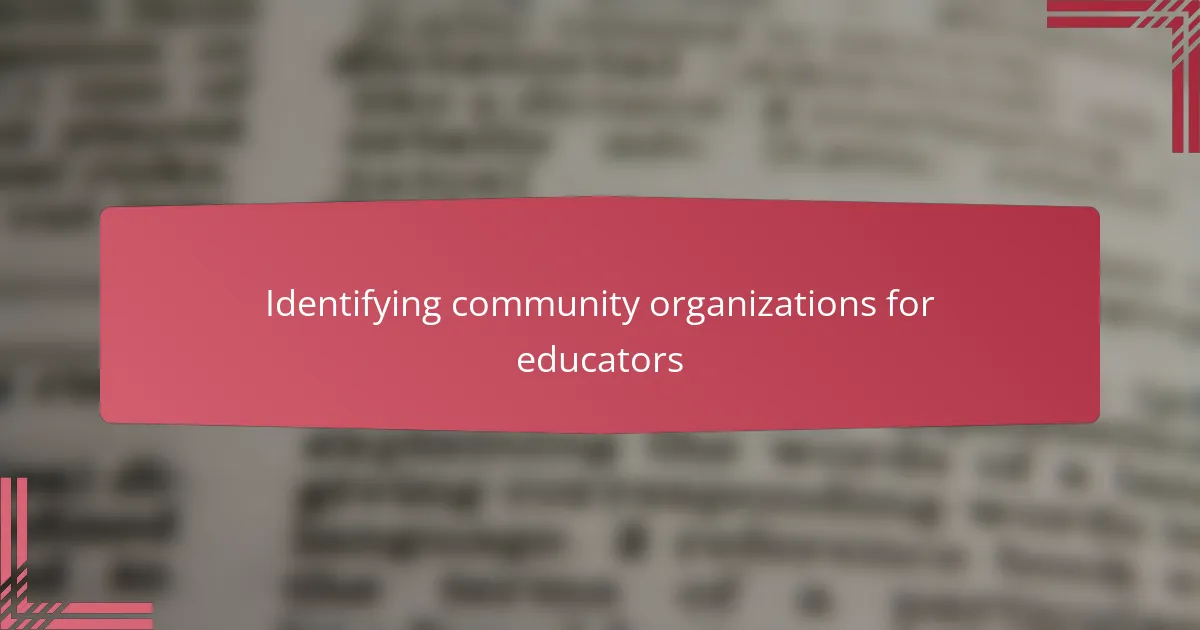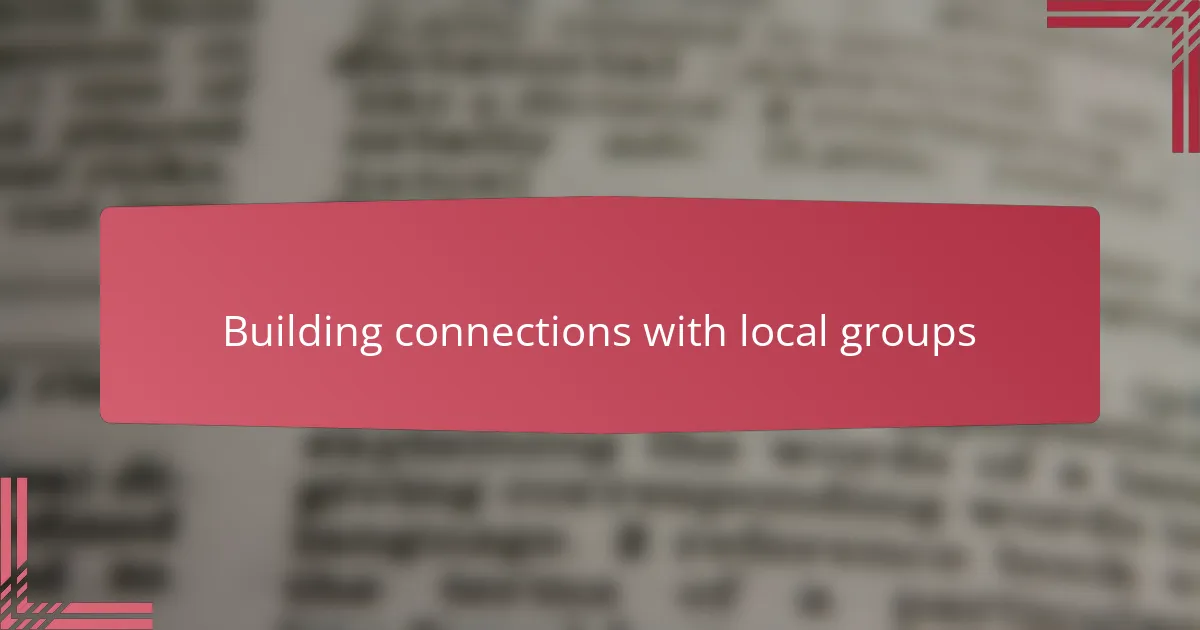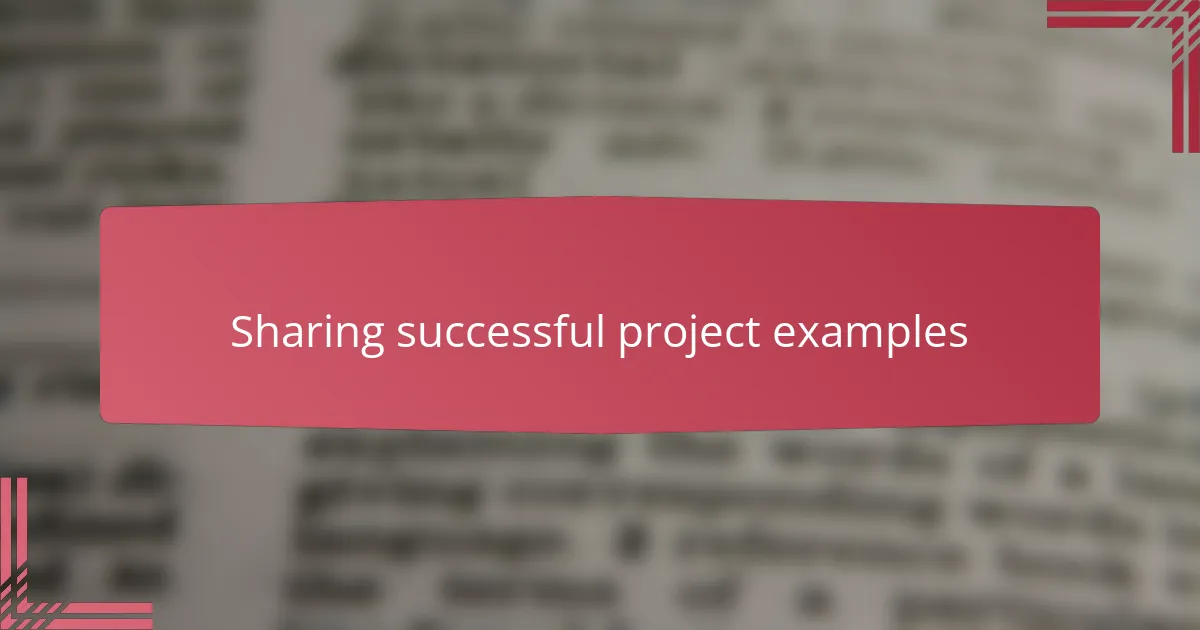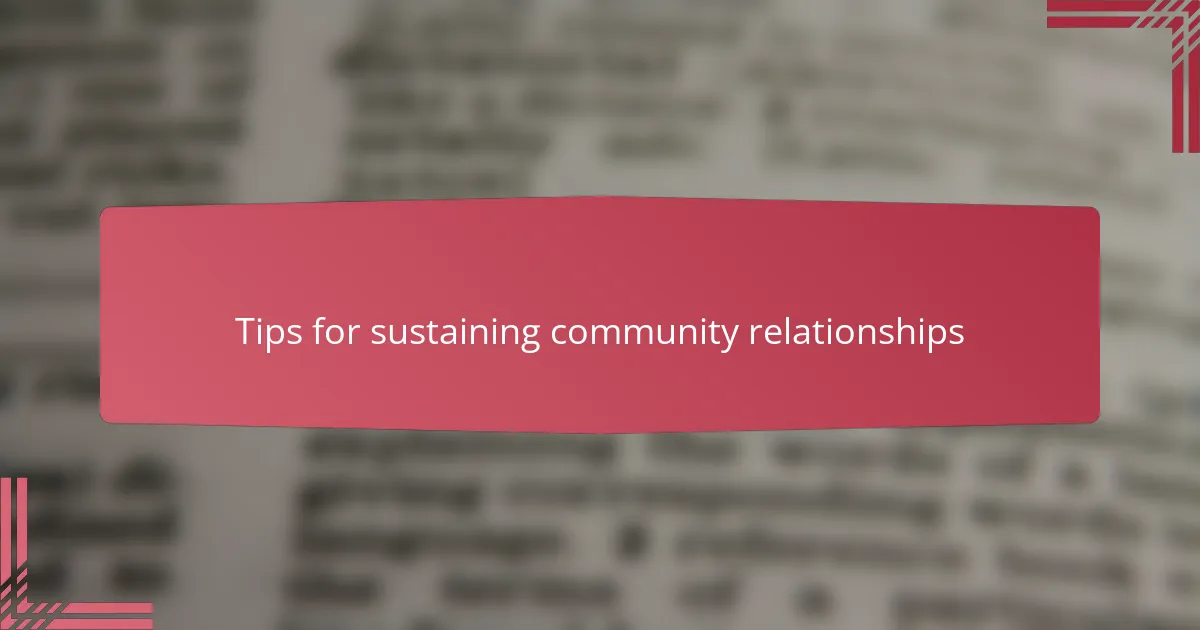Key takeaways
- Activist teacher resources empower educators to engage students in social justice, making complex topics accessible and inspiring action.
- Building genuine relationships with community organizations enhances project relevance and trust, fostering meaningful collaborations.
- Flexibility and clear communication are essential in partnerships, particularly when navigating challenges and ensuring shared goals are met.
- Sustaining community relationships requires consistency, respect for local priorities, and celebrating achievements to maintain momentum.

Understanding activist teacher resources
Activist teacher resources are more than just materials; they are tools that empower educators to connect deeply with social justice issues in their classrooms. I remember the first time I used these resources—I was struck by how they made complex topics accessible and relevant to my students, sparking genuine conversations. Have you ever felt that moment when a lesson not only informs but also inspires action? That’s the power of these resources.

Identifying community organizations for educators
Finding the right community organizations felt like discovering hidden allies in my teaching journey. I started by asking myself, which groups genuinely align with the issues my students care about? This question guided me to local nonprofits focused on youth empowerment and social justice—places where my lessons could extend beyond the classroom walls.
I recall one organization whose mission resonated so deeply that partnering with them transformed my project entirely. Connecting wasn’t just about logistics; it was about shared values and trust. Have you ever reached out and felt that immediate spark of mutual purpose? That connection fueled my enthusiasm and made the collaboration meaningful.
Sometimes, identifying these groups requires looking beyond the obvious—attending community events or simply listening to students’ experiences. I realized that being present in the community helped me spot organizations that might not have a big online presence but do incredible grassroots work. Isn’t it rewarding when you find those hidden gems?

Building connections with local groups
Building connections with local groups became a turning point in how I approached my projects. I vividly remember attending a neighborhood meeting, feeling a bit out of place at first, but then striking up a conversation with a community leader whose passion matched mine. That moment taught me that genuine connections often start with simple, honest dialogue.
I’ve found that showing up consistently matters more than just exchanging emails or phone calls. One group I worked with appreciated my regular presence at their events, which built trust over time. Have you noticed how relationships deepen when you invest time and show genuine interest beyond the initial ask?
Sometimes, the best way to build these connections is by listening more than talking. When I took the time to hear community members’ stories and challenges, it shaped my projects in ways I hadn’t expected. Isn’t it amazing how understanding grows when we prioritize listening?

Collaborating on meaningful projects
Collaborating on meaningful projects really opened my eyes to the power of shared purpose. I remember when a community partner invited me to co-create an event for youth empowerment—it wasn’t just about organizing; it was about amplifying voices together. Have you ever noticed how collaboration transforms a simple idea into something much bigger?
One thing I’ve learned is that meaningful projects require flexibility and openness. In one collaboration, unexpected challenges came up, but by working closely and adapting together, we found solutions that strengthened both our efforts. Doesn’t it feel rewarding when hurdles become opportunities to grow as a team?
I also found that clear communication is key to keeping projects meaningful and focused. Checking in regularly with community members helped me stay aligned with their needs and goals, making sure the work we did truly mattered. How often do you pause to ask if everyone still feels invested in the project’s direction?

Navigating challenges in partnerships
Navigating challenges in partnerships often feels like walking a tightrope—balancing different expectations while staying true to shared goals. I remember a time when communication hiccups almost derailed a project, and it taught me that patience and honest conversations are essential to bridge misunderstandings. Have you ever found that simply pausing to listen can prevent a small issue from becoming a major setback?
Sometimes, conflicting priorities between school schedules and community events made coordination tricky. I learned that flexibility isn’t just a buzzword; it’s a survival skill in these collaborations. When I adjusted timelines and approaches to honor everyone’s constraints, the partnership grew stronger and more resilient.
What surprised me most was how challenges revealed deeper strengths in the relationships. Facing obstacles together created a sense of camaraderie and trust that wouldn’t have developed otherwise. Isn’t it amazing how adversity can actually bring people closer when everyone is committed to the common cause?

Sharing successful project examples
One project that stands out was when I teamed up with a local literacy group to create a reading initiative for middle schoolers. Seeing students light up as they connected with new stories made all the planning worthwhile. Have you ever witnessed that spark in a student’s eyes when a project truly clicks?
In another example, working alongside a neighborhood garden collective allowed my students to engage directly with environmental justice. The hands-on experience not only deepened their understanding but also boosted their confidence in making a difference. Isn’t it powerful how real-world involvement transforms lessons into lasting change?
What I find most inspiring about sharing these successes is how they build momentum. When community organizations see tangible results, it opens doors for more collaboration and creativity. Don’t you think showcasing wins encourages others to take that first step toward partnership?

Tips for sustaining community relationships
Sustaining community relationships isn’t about occasional check-ins; it’s about cultivating ongoing trust. I learned this when I realized that showing up regularly—even without a specific agenda—makes a world of difference. Have you noticed how familiarity and consistency create a foundation that words alone can’t build?
Respecting the community’s rhythms and priorities also keeps connections strong. I once adjusted my project timeline simply because a partner had a major local event, and that gesture deepened our mutual respect. Isn’t it remarkable how small acts of consideration can speak louder than formal agreements?
Finally, celebrating wins together keeps the energy alive. When a project milestone is reached, I make it a point to acknowledge contributions openly. That shared recognition fuels enthusiasm and reminds everyone why we’re in this together. What better way to sustain a relationship than by honoring the journey and the people who make it possible?